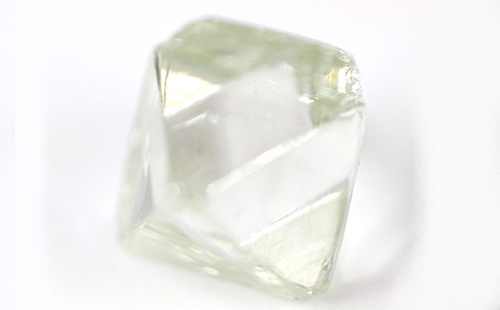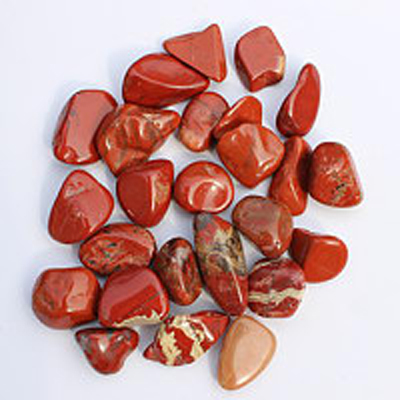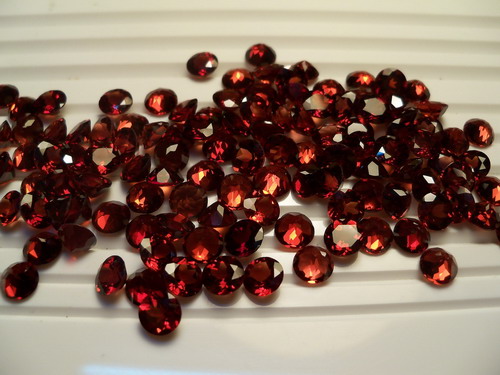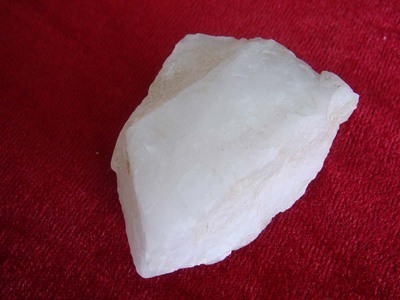
Abrasive is a kind of granular material that has high hardness and certain mechanical strength. Abrasives can be used to make abrasive products or be used directly for grinding and polishing.
Abrasive is a kind of granular material that has high hardness and certain mechanical strength. Abrasives can be used to make abrasive products or be used directly for grinding and polishing. All the abrasives share the common properties, such as high hardness, proper crush break-resisting ability, self-sharpening action, and good chemical stability that make it possible to be processed into different particles. Abrasives include natural abrasives and synthetic abrasives. All the materials that can be used to grind and cut in the natural world are called natural abrasives. Good natural abrasives should be more than just hard, sharp and tough are also important qualities.
1. Natural Diamond

So far, diamond is the hardest substance known. Its Moh's hardness is 10. Most of the natural diamond is monocrystalline, and the particles' shape is rounded grains. Pure diamond is transparent but it is rarely seen. Most diamond take on yellow, green, brown, rosy, blue, grey, and black. The color of gemstone is approximately transparent or light yellow, pink, blue, or green. Other diamond can only be applied in industrial use. The diamond density is 3.5g to 3.52g per cubic meters. It has a good thermal conductivity and brittleness.
Diamond used as abrasives can be used in two aspects, namely, dressing grinding wheels and grinding difficult-to-machine materials, such as hard alloy, gemstone, glass, stone, etc. The major abrasives products made by diamond include natural diamond cutters, natural diamond dressers, natural diamond point tools, diamond files, and glass processing tools.
2. Corundum

Among natural minerals, corundum is only second to diamond in hardness. Corundum (Al2O3) usually takes on bluish grey or yellowish grey. Corundum that contains iron takes on black. Corundum's Moh's hardness is 9. It has a stable chemical property. Corundum with chrome and takes on red is called ruby, while diamond that contains titanium is called sapphire.
When corundum contains impurities like magnetite, hematite, and quartz and takes on granular collected blocks, it is called emery, which often contains about 60% of corundum and takes on cinerous and black. The density of emery is 2.7g to 4.3g per cubic meter and its Moh's hardness is 7 to 9. As a kind of abrasives, corundum is often used to produce grinding wheels, abrasive stone, sand paper, abrasive cloth, micro powder, and polishing paste.
3. Garnet

Garnet refers to a kind of silicate minerals. It Moh's hardness is 6.5 to 7.5 and the density is 3.5g to 4.2g per cubic meter. Almost all types of garnet can be used as abrasives.
As a kind of natural abrasives, garnet has found its application in most countries due to its low industrial costs and special usage. Garnet is moderate in hardness, has a good toughness, sharp edge, as well as a good self-sharpening action, all of which enabled its superior grinding ability over other abrasives. High-temperature sintering process will make garnet achieve a better grinding effect and increase its toughness, especially in terms of wood processing, its durability is prior to fused alumina abrasives.
In resin abrasives products, garnet can be used a stuff bulking agent to replace brown fused alumina by 20% to 30% and the effect is favorable. Besides that, garnet is also an ideal material for environmental-friendly sand blasting. It can be made into bonded grinding wheels to grind camera lens. Using garnet as a cutting medium to conduct high-pressure water jet cutting technology, petroleum and natural pipelines, and steel cutting is a new environmental-friendly and safe cutting method. Garnet also has a good effect for printing plate, glass and ceramic products, leather, and stone processing.
4. Quartz & Flint

Quartz sand is a kind of silicate mineral. It is hard, wear resistant and of stable chemical property. Its color is mostly ivory, colorless or translucent. The Moh's hardness of quartz sand is 7 and the density is 2.65g per cubic meter.
The sand of abrasive paper was fine-grit quartz sand, whose hardness can be used in wood processing, but its toughness is not that high and it is not sharp. The price of abrasive cloth and abrasive paper produced by quartz sand is lower than those produced by synthetic abrasives. Cabinetmakers sometimes use flint sand paper. Flint is a kind of rock of quartz, it has many impurities and is less hard than quartz. But flint is used in leather and felt polishing due to its good toughness.
Quartz is also widely used in sandblasting. The working principle of a sandblaster is to take advantage of the compressed air to put the abrasives into motion and spray to the workpiece surface and achieve rust removal, paint removal, removal of surface impurities, surface strengthening, and all types of ornamental treatment.
Other natural abrasives include pumice, diatomite earth, feldspar, hematite, perlite, etc.
Author: Liwei Chu
Copyright: iAbrasive.com--Abrasives & Diamond Tools Market